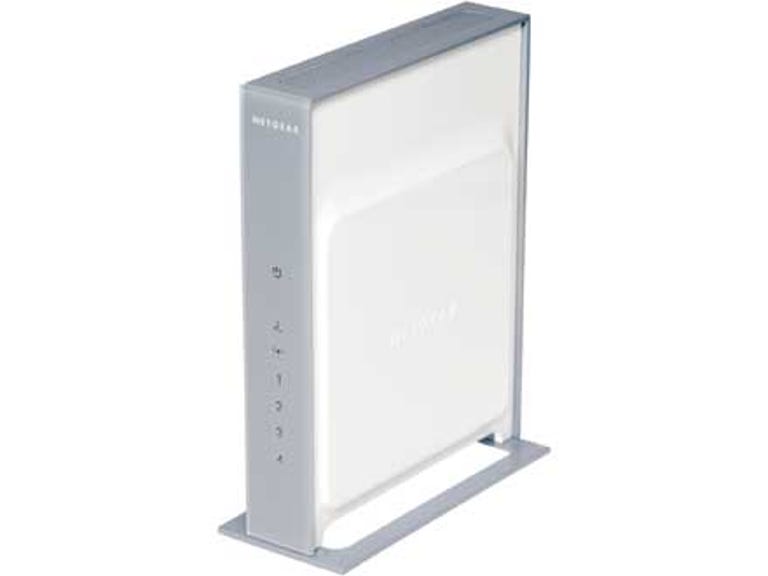 Why You Can Trust CNET
Why You Can Trust CNET Netgear RangeMax Next Wireless Router WNR834B review: Netgear RangeMax Next Wireless Router WNR834B
Netgear's RangeMax Next Wireless Router edges ever closer to the promise of 802.11n, but it still doesn't quite live up to the hype.
Design
The Good
The Bad
The Bottom Line
The WNR834B doesn't have the excellent indicator light setup that we loved so much on the Belkin N1, but it does have another innovation that we'd love to see on more routers. While there's a wizard-based CD setup which is easy enough and standard enough, the WNR834B also offers an easy way to access the router's web setup. Simply entering in "www.routerlogin.net" when attached to the WNR834B takes you straight to the router's web interface. Sure, it's just a mask for the router's default 192.168.2.1 IP address, but it's a heck of lot easier to remember.
Features
It's also backwards-compatible with 802.11b/g network equipment, although there is a slight catch here. The security setup for the WNR834B is fairly standard, with support offered for WEP, WPA-PSK and WPA2-PSK, but if you're using a network with older 802.11b/g equipment that doesn't support WPA -- such as the Nintendo DS -- you'll have to throttle the WNR834B back from its 270Mbps top speed; WEP is only supported in 802.11b/g mixed mode.
Performance
Our test results, using CNET.com.au's Broadband Speed test and a simple file copy across the network at distance, showed the kind of results we've seen for many 802.11n equipment. It's undoubtedly a quicker than plain 802.11g equipment in most tests, but not by a hugely appreciable amount, and certainly not in line with the manufacturer claims. Using CNET's Broadband Speed Test as an example, the Netgear WN511B managed an average of 2501kbps -- in fact, across half a dozen tests it maintained that exact score, while the Belkin N1 scores varied more widely but came in for an average of 2510, just slightly ahead of Netgear's own card, but not at a rate worth bothering about. Testing with a vanilla Intel Centrino 802.11g chipset gave us a figure of 2500 -- or in other words, not appreciably worth the fuss for Internet-based comparison.
It was in file transfers that the WNR834B shone -- or, to be more specific, where the WNR834B in combination with Netgear's own WN511B shone. A copy folder of 145MB of files took 3 minutes 23 seconds using the WN511B. Performing the same operation with the Belkin N1 took a much more sedate 9 minutes 56 seconds. Where this has particular relevancy is for wireless media streaming; while the Netgear card and router don't deliver the promised 270Mbps, if they can combine a regular data stream with the kinds of copy speeds we experienced, then streaming video without gaps becomes a distinct possibility.
The WNR834B thus works quite well as a wireless router, and in combination with Netgear's own wireless Draft N card can deliver some good throughput. That's somewhat disappointing in itself -- the real promise for consumers was that the interoperability between cards should have allowed us to pick and choose the best-priced components, not be locked into a particular vendor as was the case with Pre-N products. To its credit, the WNR834B does perform well for file transfers, but it's still yet another case of an 802.11n product that simply doesn't entirely live up to the 802.11n hype.



